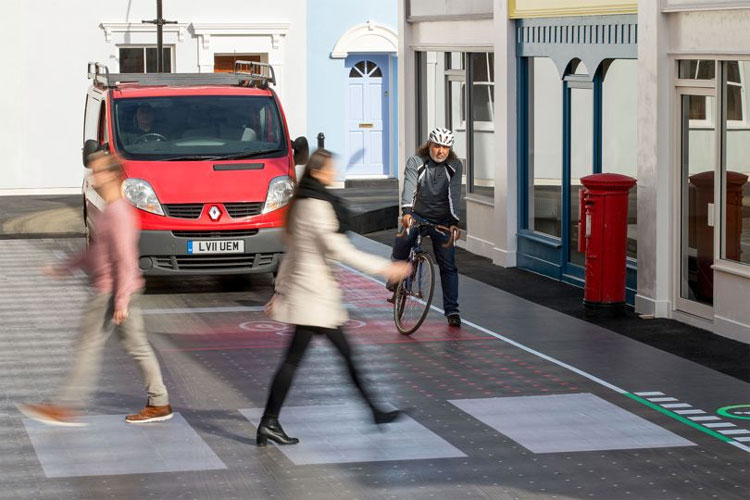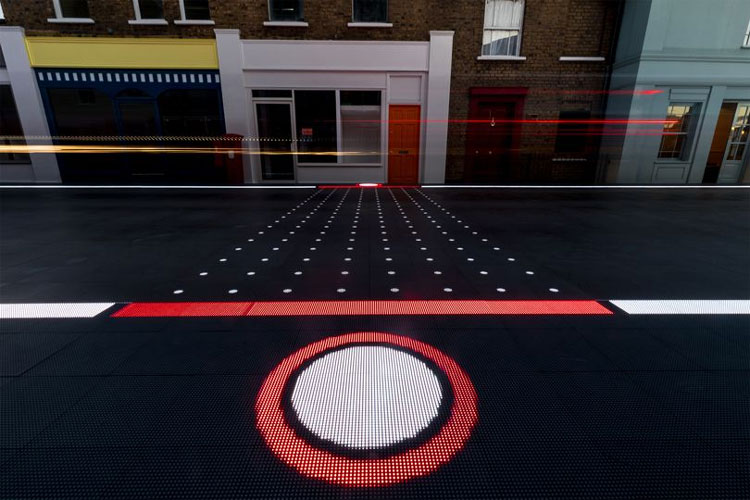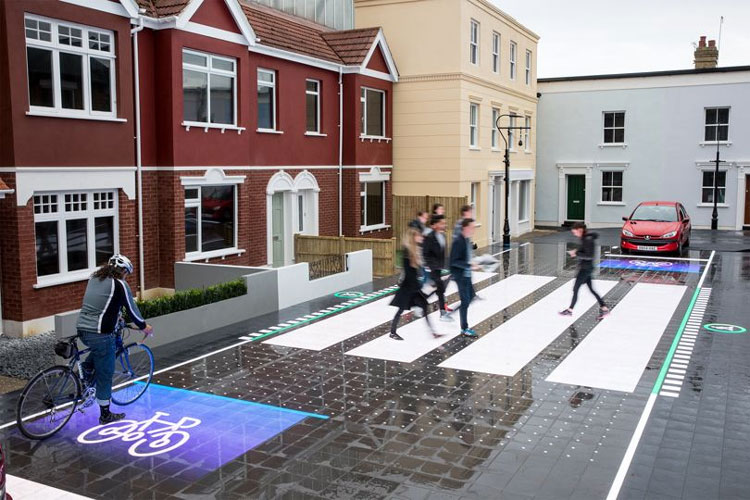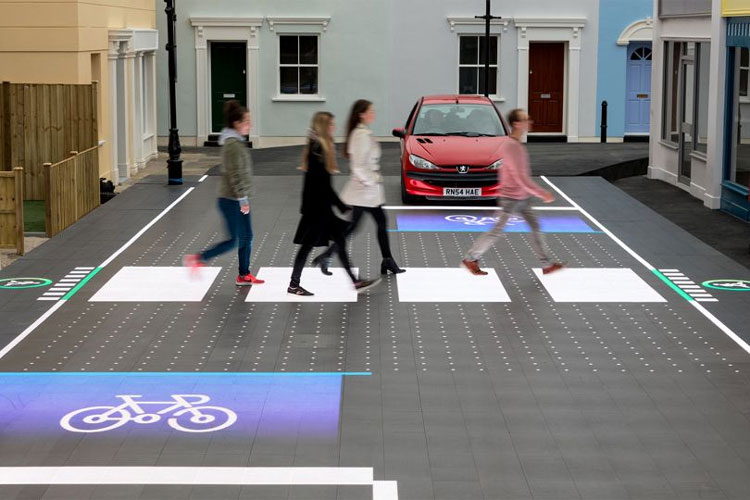A Digitized Zebra Crossing To Modernize Pedestrian Safety
Paint-on-the-floor pedestrian crossings don’t cut it anymore. They are outdated, and the cause of 20 incidents a day in the UK. Architectural firm Umbrellium reckons it’s got a solution: a sensor-packed digitized zebra crossing that responds to your movements.
“We’ve been designing a pedestrian crossing for the 21st Century,” said Usman Haque, Umbrellium’s founding partner. “Crossings that you know were designed in the 1950s, when there was a different type of city and interaction.
“This smart crossing doesn’t just look more modern than the 60 years old versions; it uses machine learning to make the crossings safer. Figures from the Transport Research Laboratory show that 7,000 incidents happen on them each year in the UK.
“The actual crossing doesn’t exist until it’s safe for you to cross – then LED patterns appear to direct people and stop cars. These are patterns we already know well; the classic white zebra crossing, the pedestrian symbol, a cycle area in front of the cars, and red and green for stop and go. These arrows and colours are designed to be much more in your face, so your attention is pulled from your phone and onto the road.
“The speed that the animations appear is much more than graphics design; it’s a careful consideration of how fast it can react so that people aren’t startled, but stay safe,” Haque said.
That reaction is less than one-hundredth of a second – enough to respond to kids running into a busy road or cyclists racing past a van. The crossing is built into 22m of responsive surface, which would be embedded under a normal road. Haque and his team at Umbrellium developed a substructure made of steel that is bolted together, so when vehicles go over it they don’t pull apart the panels and the cables. Then there’s a layer of normal, ultra-bright LEDs covered in high-impact plastic so they can support the weight of vehicles and avoid water damage.
Machine learning and embedded cameras
Once embedded into the road, two cameras are installed to film the street from opposite ends. They merge these images and, using machine learning, classify the objects in the scene: whether they are pedestrians, cyclists, a car, or high-sided vehicle. This helps the system figure out how best to react by tracking movement and assuming their trajectory. It will also learn the safest point in the road to cross to decide where the crossing should appear.
The camera sends this positional information to a computer which generates the right patterns. This is passed onto a system that sends the signals to the specific LEDs needed to make whatever pattern or colour is necessary. A fully-working prototype has been installed on a fake street at a TV studio in South West London. It is complete with pedestrians, cyclists and van and car drivers. The Umbrellium team spent days testing out the tech and mocking-up real life scenarios.
A vanishing digitized zebra crossing
A digitized zebra crossing.
The default crossing looks like a digitized zebra crossing – but the pedestrian symbol, which switches between red and green, is on the floor at the edge of the road. Once the system recognizes someone standing there, a crossing appears just like normal. Once you have crossed the crossing and markings disappear. This would be in an area where people don’t cross that often, or early in the morning. When the crossing isn’t needed, it vanishes.
If lots of people try to cross at once, the crossing markings will widen. It also moves the stop line and cyclist area back, so vehicles don’t get too close. In the real world, the system would automatically decide how best to respond
The machines could also learn to project the crossing at a slightly different orientation if, for instance, everyone makes a beeline for a certain shop after a school days. The idea comes from ants, Haque said.
“Ants put down pheromones when they go foraging – that pheromone attracts more ants to that same path, so they build up their pathway. If people were always tending to go in one direction – that’s the safe place to put the crossing,” he explained.
A Direct Line project
The project, developed in collaboration with insurance firm Direct Line, is still some way from completion. To speed up the process, the code behind it is being made open source. “The actual deployment will come later, when we figure out the logistics of implementation,” Haque said. In the real world, there would be multiple detection systems, to be fail safe. If the camera systems still failed, Umbrellium have a version that has a pressure sensor which detects where footsteps are.
It doesn’t work on the road surface just yet, but by detecting footfall, the system could infer weight and stride length. From this, it can work out how fast your are moving, and in what direction. “We have to question whether traffic lights even make sense anymore,” Hague said. “This crossing is a step toward a near future reimagining of how pedestrians can use technology.”





Comments are closed, but trackbacks and pingbacks are open.